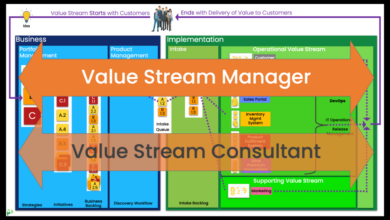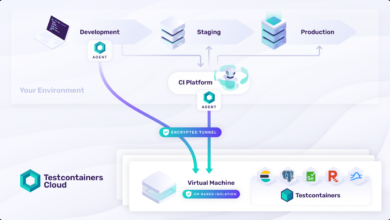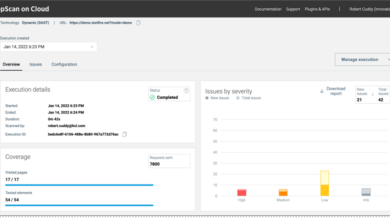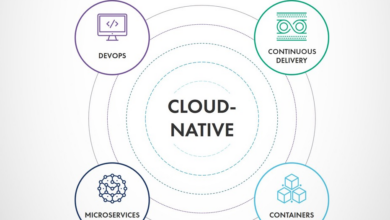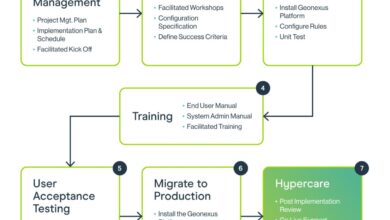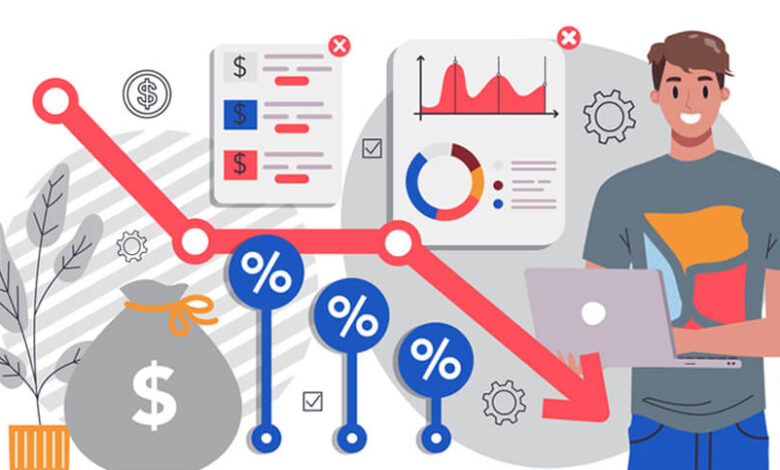
Accelerating Testing at Reduced Costs
Accelerating testing at reduced costs – it sounds almost too good to be true, right? But in today’s fast-paced world, finding ways to speed up the testing process without breaking the bank is crucial for any business, regardless of size or industry. This isn’t just about saving money; it’s about getting your product to market faster, responding more quickly to customer needs, and ultimately, gaining a competitive edge.
We’ll explore innovative strategies, practical techniques, and real-world examples that demonstrate how you can achieve this seemingly impossible feat.
From understanding the core components of accelerated testing and identifying cost factors to exploring automation tools, parallel testing, and the role of emerging technologies like AI and machine learning, we’ll cover it all. We’ll also delve into risk management strategies and discuss best practices for budget management, ensuring you can confidently implement accelerated testing methodologies while maintaining high-quality standards. Prepare to rethink your testing approach and discover how to achieve both speed and savings.
Defining “Accelerated Testing at Reduced Costs”
Accelerated testing at reduced costs is a crucial strategy for businesses across various sectors. It involves employing techniques to shorten the testing cycle while simultaneously minimizing expenses. This approach is essential for staying competitive in today’s fast-paced market, allowing for quicker product releases and improved resource allocation.Accelerated testing achieves faster results by employing methods that simulate real-world conditions more efficiently.
This could involve using advanced software, accelerated environmental chambers, or statistical modeling to predict product performance over extended periods. Reduced costs are achieved through optimizing resource utilization, automating processes, and employing more efficient testing strategies.
Core Components of Accelerated Testing
The core of accelerated testing lies in understanding and applying methodologies that amplify the effects of time, stress, or environmental factors on a product or system. This allows engineers to predict long-term performance and reliability in a fraction of the usual time. Key components include:
- Stress Testing: Subjecting the product to extreme conditions (temperature, pressure, vibration) to identify weaknesses and potential failures quickly.
- Accelerated Life Testing (ALT): Applying increased stress levels to accelerate the aging process and predict lifespan.
- Design of Experiments (DOE): Statistical methods used to optimize the testing process and reduce the number of tests needed while maximizing information gained.
- Simulation and Modeling: Using computer software to simulate real-world conditions and predict product behavior.
Cost Factors Involved in Testing, Accelerating testing at reduced costs
Numerous factors contribute to the overall cost of testing. Understanding these allows for effective cost reduction strategies.
- Labor Costs: Salaries of engineers, technicians, and other personnel involved in the testing process.
- Equipment Costs: Investment in testing equipment, software, and infrastructure.
- Material Costs: Expenditure on test samples, consumables, and other materials.
- Time Costs: Opportunity cost associated with delayed product launches and potential market share loss.
- Failure Costs: Costs associated with product recalls, repairs, and warranty claims due to undetected defects.
Industries Where Accelerated Testing is Crucial
Accelerated testing at reduced costs is particularly vital in industries where product reliability and safety are paramount, and time to market is a critical competitive factor.
- Automotive: Rigorous testing is needed to ensure vehicle safety and reliability. Accelerated testing significantly reduces the time required for crash testing and durability assessments.
- Aerospace: Extreme conditions in space require extensive testing. Accelerated methods help predict component lifespan and performance in harsh environments.
- Pharmaceuticals: Drug stability and efficacy must be rigorously tested. Accelerated stability studies using elevated temperatures and humidity predict shelf life and prevent costly failures.
- Electronics: Consumer electronics require rapid testing cycles to meet market demands. Accelerated testing helps identify potential failures before mass production.
Comparison of Traditional and Accelerated Testing Methods
The following table compares traditional and accelerated testing methods across key factors:
| Method | Cost | Time | Effectiveness |
|---|---|---|---|
| Traditional Testing | High (due to extended duration and extensive resources) | Long (months or years) | Relatively lower (due to time constraints and limited data points) |
| Accelerated Testing | Lower (due to shorter duration and optimized resource utilization) | Short (weeks or months) | Higher (due to increased data points and efficient simulation) |
Strategies for Accelerating Testing
Accelerating testing while simultaneously reducing costs is a crucial goal for any software development team. This requires a strategic approach that leverages efficient methodologies, automation, and smart resource allocation. The following strategies offer practical ways to achieve this balance between speed and cost-effectiveness.
Shortening Test Cycles Through Methodologies
Several methodologies can significantly shorten test cycles. Agile testing, for instance, integrates testing throughout the development lifecycle, enabling early detection and resolution of bugs. This iterative approach minimizes the time spent on extensive testing at the end of the development process. Another effective methodology is risk-based testing, where testing efforts are prioritized based on the potential impact of identified risks.
This allows teams to focus their resources on the most critical areas, resulting in faster testing and reduced costs. Finally, adopting a shift-left testing approach, where testing begins early in the development cycle, helps catch defects early, preventing costly rework later.
Automation Tools and Their Impact
Automation plays a pivotal role in accelerating testing and reducing costs. Tools like Selenium for web application testing, Appium for mobile testing, and JUnit for unit testing automate repetitive tasks, freeing up testers to focus on more complex aspects. For example, Selenium’s ability to automate browser interactions allows for rapid execution of regression tests, significantly reducing the time required for testing new features or updates.
The initial investment in these tools is offset by the long-term savings in time and labor costs. Moreover, tools like Jenkins and Bamboo can automate the build, test, and deployment process, further enhancing efficiency. These tools, when integrated effectively, lead to a faster feedback loop and faster release cycles.
Parallel Testing for Enhanced Efficiency
Parallel testing involves running multiple tests simultaneously on different machines or environments. This significantly reduces the overall testing time, especially for large test suites. For example, instead of running 100 tests sequentially, which might take hours, parallel testing can significantly reduce the time to minutes, depending on the number of available resources. This approach not only accelerates testing but also improves resource utilization and reduces overall costs.
Cloud-based testing platforms offer scalable parallel testing capabilities, making it easier to implement and manage.
Streamlined Testing Process Flowchart
The following flowchart illustrates a streamlined testing process designed for speed and cost-effectiveness:[Imagine a flowchart here. The flowchart would start with “Requirement Gathering,” followed by “Test Planning” which branches into “Test Case Design” and “Test Environment Setup.” “Test Case Design” feeds into “Test Execution” (which includes automated and manual testing components running in parallel), which then leads to “Defect Reporting.” “Defect Reporting” feeds back into “Test Case Design” for revisions and then to “Test Execution” again in an iterative loop.
Finally, “Test Execution” leads to “Test Closure” and “Release.”] This flowchart visually represents a process emphasizing early testing, automation, and iterative feedback loops to minimize testing time and resources. The parallel execution of automated and manual tests is key to optimizing efficiency.
Cost Reduction Techniques in Testing
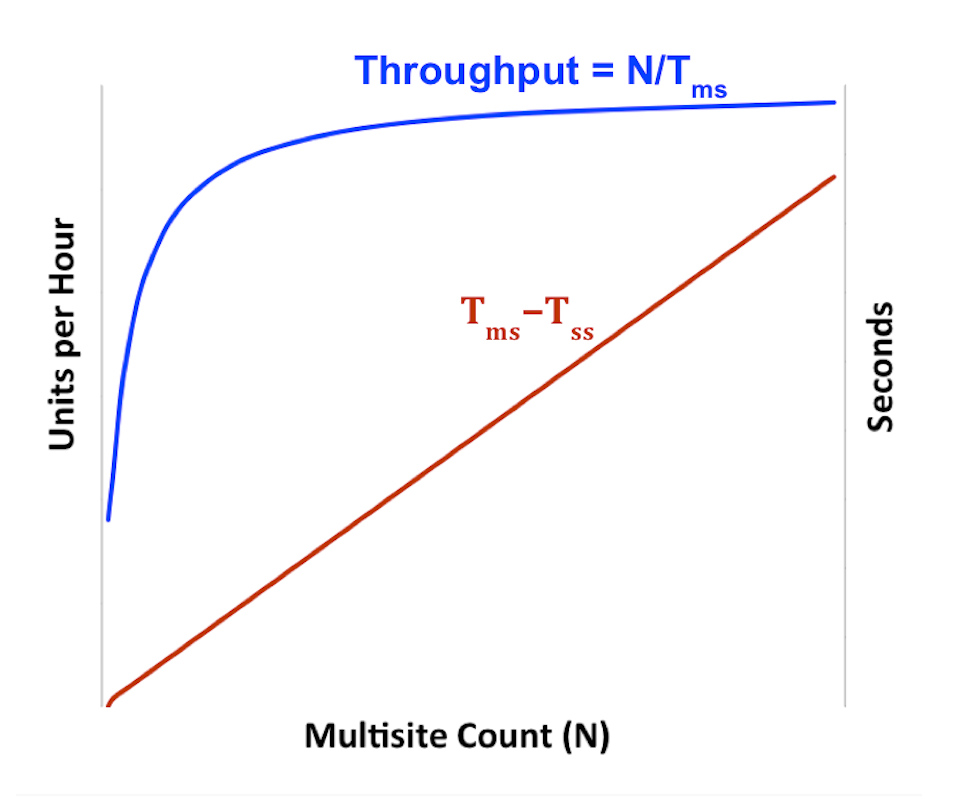
Slashing testing costs without sacrificing quality is a crucial goal for any software development team. This requires a strategic approach, moving beyond simply cutting corners and instead focusing on optimizing processes and resource allocation. Effective cost reduction hinges on identifying areas of waste, leveraging automation, and adopting efficient testing methodologies.
This section delves into practical strategies for significantly reducing testing expenses while maintaining—and even improving—the overall quality of your software. We’ll explore key areas for cost savings, compare different testing approaches based on their cost-effectiveness, and demonstrate how resource optimization can lead to substantial financial gains. Finally, we’ll provide actionable best practices for effective budget management in the testing phase.
Identifying Key Areas for Cost Savings
Pinpointing areas where costs can be trimmed requires a thorough analysis of your current testing processes. This involves examining the entire testing lifecycle, from planning and design to execution and reporting. Common areas ripe for cost reduction include inefficient test case design, redundant testing efforts, and inadequate test environment management. For example, a company might discover they’re running the same tests repeatedly across multiple platforms without justification.
By streamlining the test suite and focusing on high-impact areas, significant cost savings can be realized.
Cost-Effectiveness of Different Testing Approaches
Different testing methodologies vary significantly in their cost-effectiveness. For instance, automated testing, while initially requiring investment in tools and training, generally offers substantial long-term cost savings compared to manual testing. Automated tests can be run repeatedly and consistently, reducing the need for large manual testing teams and significantly speeding up the testing cycle. However, the cost-effectiveness of automation depends heavily on the project’s size and complexity.
For smaller projects, the initial investment might outweigh the benefits. Conversely, exploratory testing, while less structured, can be more cost-effective for identifying unexpected issues in early stages, preventing costly bug fixes later in the development cycle. A balanced approach, combining automated and exploratory testing, often yields the best results.
Resource Optimization for Reduced Expenses
Optimizing resources is another critical aspect of cost reduction. This involves efficiently utilizing existing tools, personnel, and infrastructure. For example, effective test data management can significantly reduce testing time and costs. Instead of creating entirely new datasets for each test, strategies like data masking or virtualization can be used to reuse existing data, minimizing the time and resources spent on data creation and management.
Similarly, efficient use of testing environments—leveraging cloud-based solutions for scalability and cost-efficiency—can minimize infrastructure costs. Proper training and upskilling of testing personnel can also increase productivity and reduce errors, leading to cost savings in the long run.
Best Practices for Budget Management in Testing
Effective budget management in software testing requires a proactive and disciplined approach. This involves detailed planning, regular monitoring, and proactive risk mitigation. Creating a comprehensive test plan with clearly defined scope, timelines, and resource allocation is crucial. Regular tracking of expenses against the budget allows for early identification of potential overruns and facilitates timely corrective actions. Employing agile methodologies can help to improve budget control by breaking down testing into smaller, manageable iterations, allowing for better cost estimation and tracking.
Finally, fostering a culture of continuous improvement within the testing team, where processes are regularly reviewed and optimized, contributes to long-term cost savings.
Risk Management in Accelerated Testing
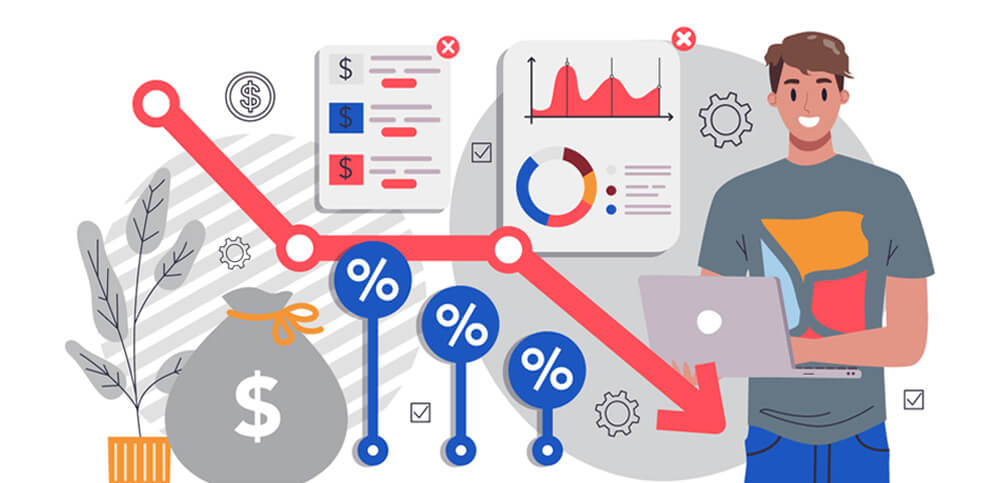
Accelerated testing, while offering significant benefits in terms of speed and cost reduction, introduces inherent risks that must be carefully managed. Ignoring these risks can lead to flawed products, missed deadlines, and ultimately, project failure. A robust risk management strategy is crucial for ensuring the success of any accelerated testing initiative.Potential risks stem from the compressed timelines and intensified testing efforts.
The pressure to deliver results quickly might compromise the thoroughness and rigor of the testing process, potentially overlooking critical bugs or vulnerabilities. Furthermore, the use of accelerated testing techniques, such as stress testing or accelerated life testing, can introduce their own set of challenges, such as equipment failure or inaccurate results if not properly calibrated and monitored.
Potential Risks Associated with Accelerated Testing Methodologies
Accelerated testing methodologies, while efficient, introduce several risks. For example, the accelerated degradation of a product under stress testing might not accurately reflect real-world degradation patterns. Similarly, using automated testing tools extensively could lead to overlooking edge cases or user experience issues that manual testing might uncover. Another potential risk is the selection of an inappropriate acceleration model, leading to inaccurate predictions of product lifespan or performance.
Finally, insufficient training of testing personnel on the specific accelerated techniques could lead to errors and misinterpretations of results.
Strategies for Mitigating Risks and Ensuring Test Quality
Effective risk mitigation involves a multi-pronged approach. First, a thorough risk assessment should be conducted at the outset of the project, identifying potential risks and their likelihood and impact. This assessment should involve all stakeholders, including developers, testers, and project managers. Second, clear and well-defined test cases are essential. These should cover a wide range of scenarios, including both normal and extreme conditions, to ensure comprehensive coverage.
Third, a combination of automated and manual testing should be employed to leverage the strengths of both approaches and mitigate their individual weaknesses. Fourth, regular reviews and progress checks are vital to identify and address issues early on. Finally, rigorous documentation of the testing process, including test cases, results, and any deviations from the plan, is crucial for transparency and accountability.
Balancing Speed and Accuracy in Testing
The core challenge in accelerated testing is balancing the need for speed with the imperative of accuracy. This balance requires careful planning and execution. Prioritization of test cases based on risk and criticality is key. Focusing on high-impact areas first allows for faster identification of critical defects while still ensuring thorough testing. The selection of appropriate acceleration models and techniques is also critical.
These should be validated against real-world data and adjusted as needed to ensure accuracy. Finally, regular validation of test results against real-world data is crucial for ensuring the reliability and accuracy of the accelerated testing process. This could involve comparing results from accelerated tests with results from field tests or simulations.
Risk Assessment Matrix for Accelerated Testing Projects
A risk assessment matrix helps visualize and prioritize risks. The following table provides a sample matrix. Remember to adapt this to your specific project context.
| Risk | Likelihood | Impact | Mitigation Strategy |
|---|---|---|---|
| Inaccurate acceleration model | Medium | High | Validate model against real-world data; use multiple models |
| Insufficient test coverage | High | High | Prioritize test cases; use risk-based testing |
| Automated testing tool failures | Medium | Medium | Implement robust error handling; use multiple testing tools |
| Inadequate training of testers | Low | Medium | Provide comprehensive training on accelerated testing techniques |
| Overlooking edge cases | High | Medium | Supplement automated testing with manual testing; include edge cases in test design |
Case Studies and Best Practices: Accelerating Testing At Reduced Costs
Accelerated testing at reduced costs isn’t just a theoretical concept; it’s a reality for many organizations. Learning from both successful and unsuccessful implementations is crucial for maximizing efficiency and minimizing risk. This section delves into real-world examples, highlighting key lessons and best practices.Successful accelerated testing hinges on a well-defined strategy, appropriate methodology selection, and rigorous risk management. Failure often stems from neglecting these crucial aspects.
By analyzing both positive and negative outcomes, we can refine our approach and improve future testing endeavors.
Successful Accelerated Testing Implementations
Several companies have successfully implemented accelerated testing strategies, leading to significant cost savings and improved time-to-market. These examples showcase the diverse applications and potential benefits of this approach.
- Company A: This software company adopted a risk-based testing approach, focusing on critical functionalities and prioritizing test cases based on their potential impact. They achieved a 30% reduction in testing time and a 15% reduction in testing costs by utilizing automated testing tools and parallel testing techniques. Their focus on automation allowed for rapid execution of regression tests, freeing up manual testers to focus on more complex scenarios.
- Company B: A manufacturer of consumer electronics integrated accelerated life testing into their product development cycle. By using accelerated stress testing methods, they identified potential failure points early in the development process, preventing costly recalls and improving product reliability. This resulted in a 20% reduction in warranty claims and a 10% reduction in overall product development costs.
- Company C: A telecommunications company leveraged virtualized environments for accelerated network testing. This allowed them to simulate various network conditions and traffic patterns, significantly reducing the time and resources required for traditional testing. They reported a 40% reduction in testing time and a 25% reduction in infrastructure costs.
Lessons Learned from Failed Accelerated Testing Attempts
While many organizations experience success with accelerated testing, failures do occur. Understanding these failures is vital to avoiding similar pitfalls in future projects.
- Inadequate Planning: A common cause of failure is insufficient planning. Without a clear strategy, defined objectives, and appropriate resource allocation, accelerated testing can become chaotic and ineffective. One company attempted to drastically reduce testing time without adequately considering the risks, leading to critical bugs being missed and causing significant post-release issues.
- Over-reliance on Automation: While automation is a key component of accelerated testing, over-reliance on it can lead to unforeseen problems. Test automation scripts require meticulous development and maintenance, and insufficient attention to this aspect can lead to inaccurate or unreliable results. A project that heavily relied on automated testing without adequate validation experienced high rates of false positives and negatives, resulting in significant delays.
- Ignoring Risk Management: Neglecting risk management is a recipe for disaster. Accelerated testing often involves trade-offs, and without careful consideration of the potential risks, critical issues can be overlooked. A medical device company that prioritized speed over thoroughness in their accelerated testing experienced a product recall due to undetected safety concerns.
Comparative Analysis of Case Studies
The following table summarizes the key findings from the case studies, highlighting cost savings and efficiency gains.
| Company | Approach | Testing Time Reduction | Cost Reduction | Key Success Factors |
|---|---|---|---|---|
| Company A | Risk-based testing, automation | 30% | 15% | Effective test case prioritization, robust automation framework |
| Company B | Accelerated life testing | N/A | 10% (product development) 20% (warranty claims) | Early identification of failure points, improved product reliability |
| Company C | Virtualized environment testing | 40% | 25% | Efficient simulation of network conditions, reduced infrastructure needs |
Detailed Case Study: Company A’s Risk-Based Testing Approach
Company A, a mid-sized software development firm, faced increasing pressure to reduce testing time and costs while maintaining high quality. They implemented a risk-based testing strategy, prioritizing test cases based on their potential impact on the system. This involved a detailed risk assessment, identifying critical functionalities and potential failure points. They then developed a comprehensive test suite, leveraging automated testing tools for regression testing and manual testing for more complex scenarios.
Parallel testing techniques were also employed to further reduce testing time.Challenges faced included integrating automated testing into their existing workflow, ensuring the accuracy and reliability of automated test scripts, and managing the increased complexity of the risk-based approach. Solutions implemented included dedicated training for testers, the establishment of a robust test automation framework, and the implementation of a clear test management process.
The results were impressive: a 30% reduction in testing time and a 15% reduction in testing costs, while maintaining a high level of software quality. Their success underscored the importance of careful planning, robust automation, and effective risk management in achieving accelerated testing at reduced costs.
Technological Advancements and Their Impact
The rapid evolution of technology is revolutionizing the software testing landscape, offering unprecedented opportunities to accelerate testing cycles while simultaneously reducing costs. This section delves into the specific contributions of emerging technologies and their impact on the efficiency and affordability of software quality assurance. We’ll explore the roles of AI, machine learning, and cloud-based platforms, comparing their strengths and weaknesses to provide a comprehensive understanding of the current technological landscape in software testing.
AI and Machine Learning in Accelerated Testing
Artificial intelligence and machine learning are transforming how we approach software testing. AI-powered tools can automate repetitive tasks, such as test case generation, execution, and result analysis. Machine learning algorithms can analyze historical test data to predict potential failures, prioritize testing efforts, and even learn to identify patterns indicative of defects, significantly reducing the time and resources required for comprehensive testing.
For example, AI can analyze code to automatically generate test cases, leading to more thorough testing in less time. Machine learning models can predict which tests are most likely to find bugs, allowing testers to focus their efforts on the most critical areas.
Cloud-Based Testing Platforms and Cost Reduction
Cloud-based testing platforms offer a compelling solution for reducing testing costs. By leveraging cloud infrastructure, organizations can eliminate the need for expensive on-premise hardware and software, significantly lowering capital expenditure. Furthermore, cloud platforms offer scalable resources, allowing teams to easily adjust their testing capacity based on project needs, avoiding the costs associated with over-provisioning or under-provisioning of resources. Pay-as-you-go models further contribute to cost optimization, ensuring that organizations only pay for the resources they consume.
Companies like Sauce Labs and BrowserStack are prime examples of providers offering these services, facilitating cross-browser testing and reducing the need for maintaining a large internal infrastructure.
Comparison of Technological Solutions
Several technological solutions exist for accelerating testing and reducing costs, each with its own set of benefits and limitations. For instance, while AI-powered test automation tools can significantly reduce manual effort, they require substantial upfront investment in training data and model development. Similarly, cloud-based platforms offer scalability and cost-effectiveness but may introduce security concerns or latency issues depending on the provider and network connectivity.
Traditional, script-based automation tools remain a viable option for simpler testing scenarios, offering a balance between cost and complexity, although they may lack the adaptability and intelligence of AI-driven solutions. The optimal choice depends on the specific needs and constraints of the project.
Impact of Technological Advancements on Testing Speed and Cost
The following chart illustrates the relationship between testing time and cost using different technological approaches. Note that these values are illustrative and will vary depending on project specifics and technology implementation.
| Technology | Testing Time (Days) | Cost (USD) |
|---|---|---|
| Manual Testing | 30 | 10000 |
| Traditional Automation | 15 | 7000 |
| AI-powered Automation (Cloud-based) | 5 | 6000 |
| AI-powered Automation (On-premise) | 7 | 8000 |
This chart demonstrates how leveraging AI and cloud-based platforms can significantly reduce both testing time and cost compared to traditional manual or automated approaches. The specific cost savings will vary based on factors such as the complexity of the application under test, the size of the testing team, and the chosen technology stack. However, the overall trend points towards a significant improvement in efficiency and cost-effectiveness.
Closing Notes
Ultimately, accelerating testing at reduced costs isn’t just about ticking boxes; it’s about transforming your testing strategy into a powerful engine for innovation and growth. By embracing the strategies and techniques we’ve discussed – from automation and parallel testing to leveraging emerging technologies and meticulous risk management – you can unlock significant cost savings while simultaneously boosting efficiency and product quality.
Remember, the journey towards faster, more cost-effective testing is an ongoing process of optimization and adaptation. Start exploring the possibilities today, and watch your testing process – and your bottom line – flourish.
Question & Answer Hub
What are the biggest risks associated with accelerating testing?
Rushing the testing process can lead to overlooking critical bugs, compromising quality, and potentially impacting product launch timelines or even causing reputational damage. Thorough risk assessment and mitigation strategies are key.
How can I measure the ROI of accelerated testing?
Track key metrics like testing time reduction, defect detection rates, and cost savings. Compare these figures to your previous testing cycles to quantify the return on investment.
What if my team lacks the expertise for implementing accelerated testing?
Invest in training and upskilling your team, or consider outsourcing certain aspects of the testing process to specialized firms with the necessary expertise.
Are there any free or open-source tools for accelerated testing?
Yes, several open-source tools and frameworks exist, depending on your specific needs. Research options like Selenium, JUnit, and others to find suitable solutions.
